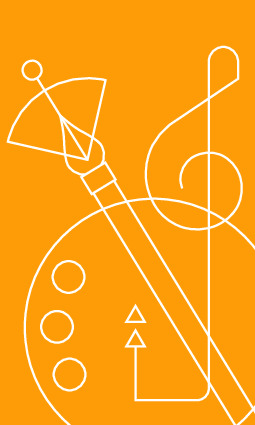|
|
|
| Module code: BAKM-019 |
|
|
2S (2 hours per week) |
|
3 |
| Semester: 1 |
| Mandatory course: yes |
Language of instruction:
German |
Assessment:
Written composition or written examination, type and duration of the examination are specified in the module handbook.
[updated 19.11.2019]
|
Exam recurrence:
The information regarding exam recurrence is found within the exam policy of the study programme (ASPO).
|
BAKM-019 (P430-0022) Cultural Management, Propädeutikum, ASPO 01.10.2020
, semester 1, mandatory course
|
30 class hours (= 22.5 clock hours) over a 15-week period.
The total student study time is 90 hours (equivalent to 3 ECTS credits).
There are therefore 67.5 hours available for class preparation and follow-up work and exam preparation.
|
Recommended prerequisites (modules):
None.
|
Recommended as prerequisite for:
|
Module coordinator:
Prof. Dr. phil. Christian Bauer |
Lecturer:
Dr. Andreas Bayer
Dozierende des Studiengangs
[updated 06.11.2019]
|
Learning outcomes:
After successfully completing this course, students will:
_ be able to describe the fundamental characteristics of art historical eras from the Middle Ages to the present through independent scientific research and understand central aspects of specific and superordinate characteristics of respective phases of artistic development based on major works of art history.
_ be able to apply art historical methods of image and work analysis as instruments for interpreting works of fine art.
_ be able to describe various genres of visual art (including painting, graphic art and drawing, sculpture, performance, photography, installation, new media) and place them in their respective temporal and cultural-historical contexts.
_ be able to identify main artistic themes and phenomena from various eras and compare and analyze them across eras and genres.
_ be able to explore and understand images from every day and popular culture (e.g. advertising, digital-interactive game environments) based on art historical standards.
[updated 19.11.2019]
|
Module content:
_ Overview of art historical developments from the Middle Ages to the present day
_ Basic knowledge art and architectural history, as well as the theory of art and architecture
_ Basic knowledge about the various genres of and media used in visual art
_ Knowledge of major works of art history and their classification in historical and intellectual contexts
_ Art historical methods used to describe and analyze images or works of art
_ Comparisons of artistic tasks, themes and phenomena across eras and genres
_ Integration of so-called non-artistic images and pictorial worlds from e.g. advertising, everyday aesthetics and popular culture
[updated 19.11.2019]
|
Teaching methods/Media:
Seminar
[updated 19.11.2019]
|
Recommended or required reading:
_ Hans Belting: Bild und Kult, München 1990
_ Hans Belting (Hrsg.): Bilderfragen. Die Bildwissenschaft im Aufbruch, München 2007
_ Gottfried Boehm (Hrsg.): Was ist ein Bild?, München 1994
_ Gernot Böhme: Theorie des Bildes, München 1990
_ Wolfgang Brassat, Hubertus Kohle (Hrsg.): Methoden-Reader Kunstgeschichte, Köln 2003
_ Ernst H. Gombrich: Die Geschichte der Kunst, Stuttgart und Zürich 1977
_ Udo Kultermann: Geschichte der Kunstgeschichte, München 1990
_ Udo Kultermann: Kleine Geschichte der Kunsttheorie. Von der Vorgeschichte bis zur Gegenwart, Darmstadt 1989
_ Kristin Marek, Martin Schulz (Hrsg.): Kanon Kunstgeschichte, 4 Bde. Paderborn 2015
_ Sabine Poeschel: Handbuch der Ikonographie. Sakrale und profane Themen der bildenden Kunst, Darmstadt 2007
[updated 19.11.2019]
|


